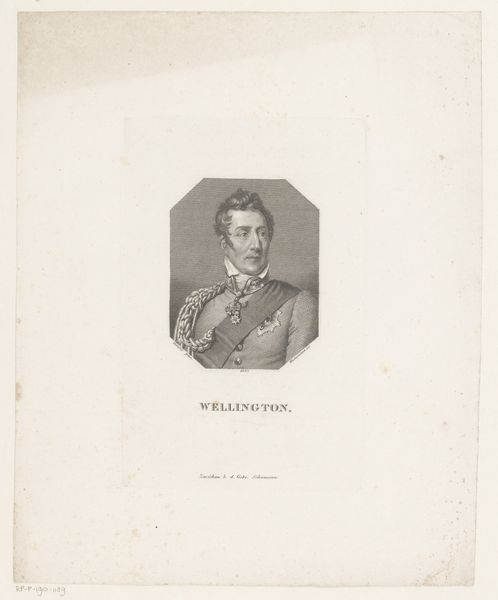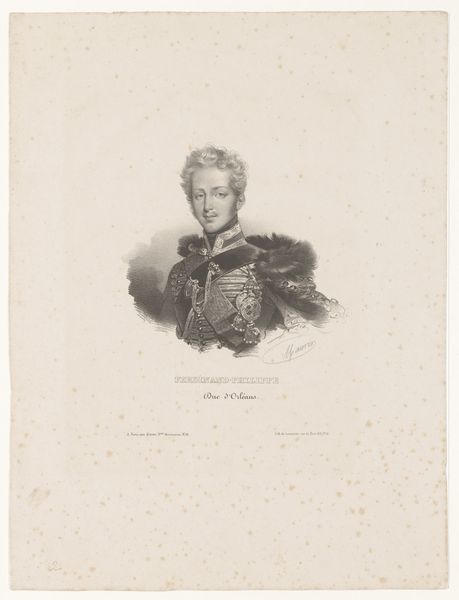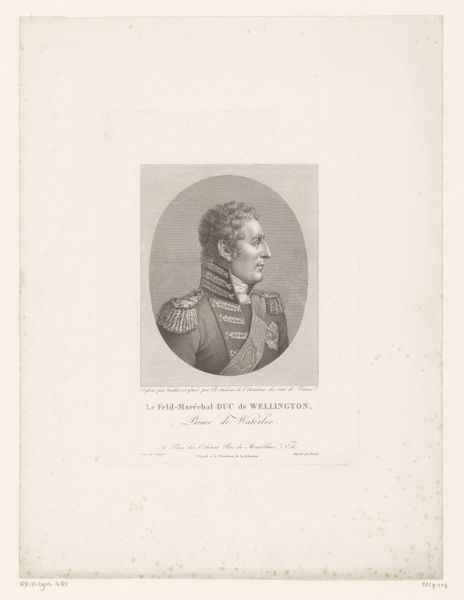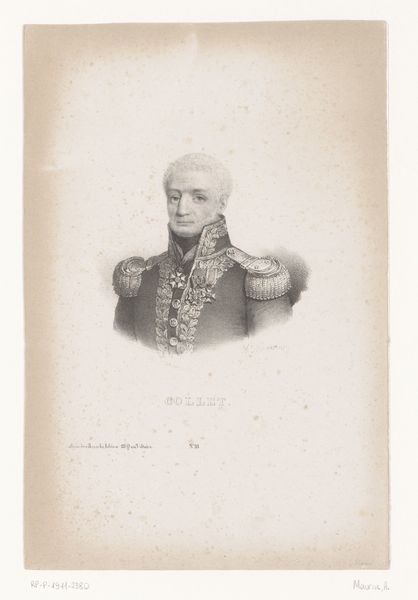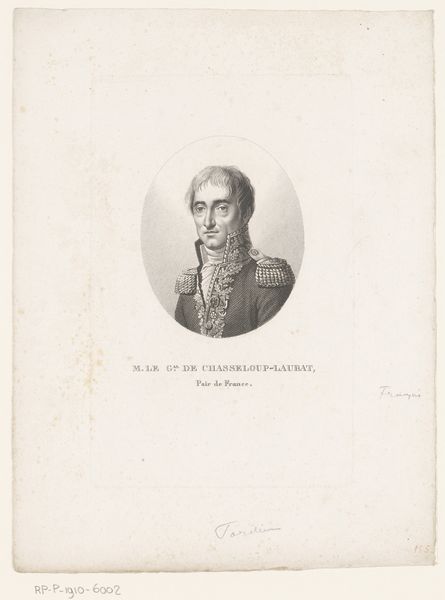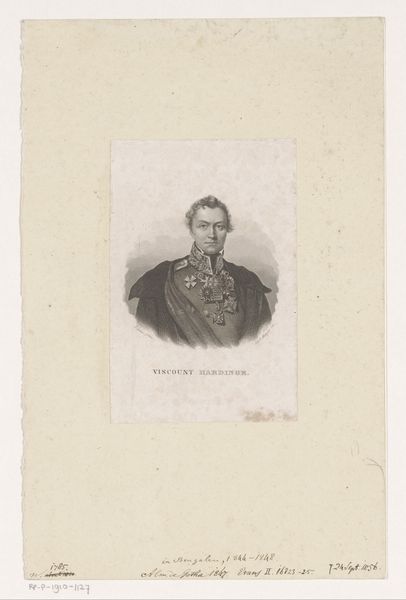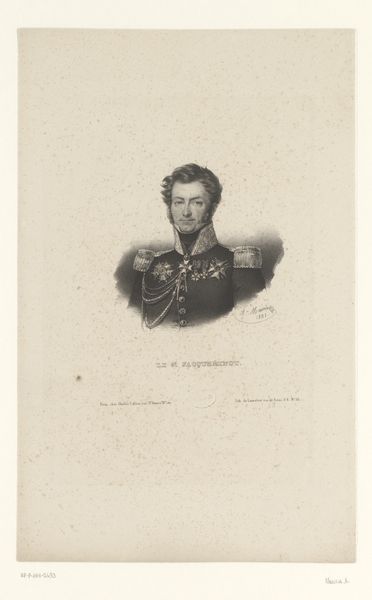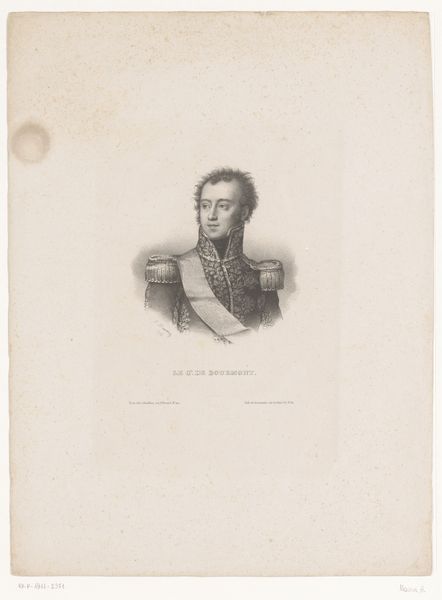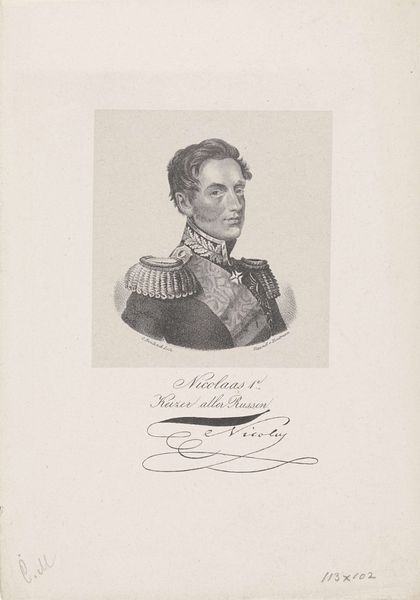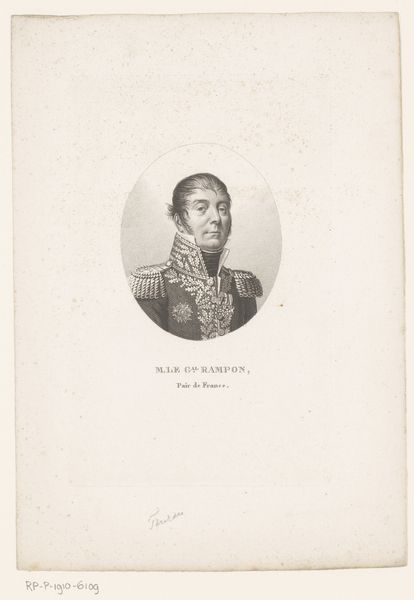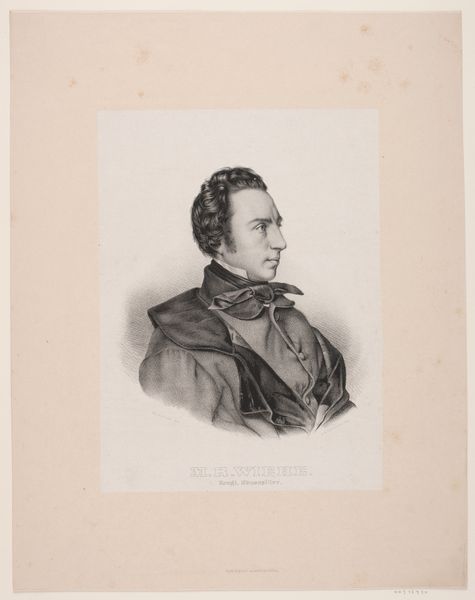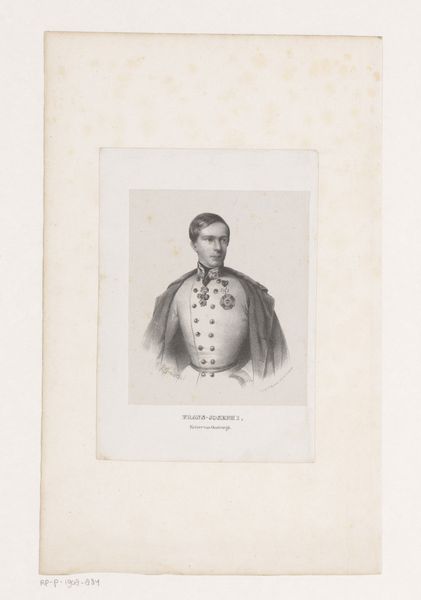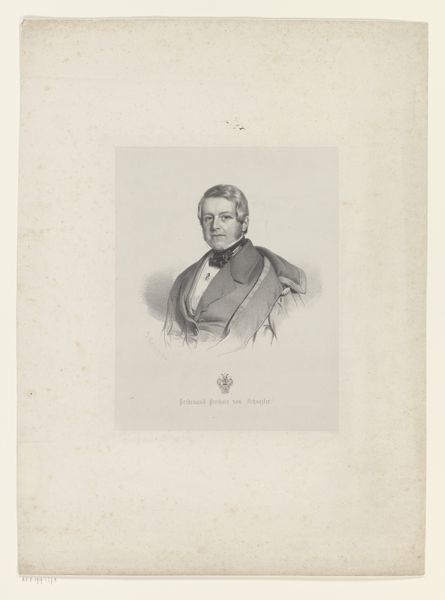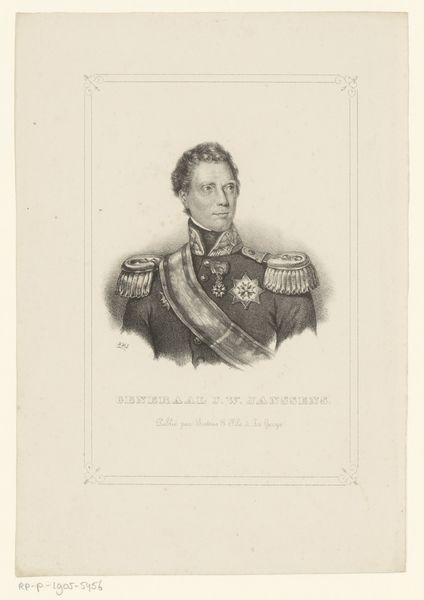
Dimensions: height 250 mm, width 168 mm
Copyright: Rijks Museum: Open Domain
Curator: This is a print, dating from 1848 to 1886, by Léon Mauduison, titled "Portret van Arthur Wellesley, hertog van Wellington," or "Portrait of Arthur Wellesley, Duke of Wellington." Editor: The engraving yields a rather somber mood. It’s the precise use of light and shadow across his face and uniform that pulls me in; such disciplined tonal control! Curator: Absolutely, and it places the Duke squarely within Neoclassical aesthetics and its deep interest in order. Consider Wellington’s legacy during this period – remember, he led British forces to victory against Napoleon, so his portrayal carries significant political weight. He's rendered as a man of order and reason, aligning with Neoclassical values, even if the Duke's real-world politics proved more conservative. Editor: The engraving technique further emphasizes this— the clean lines, the precision of the shading. It really does exemplify academic art, a pursuit after perfect imitation and structure. Notice how his features, while lifelike, have this idealised quality. It presents an archetype of leadership more than an individual man. Curator: And that archetype had a strong purpose, promoting stability after a turbulent era. Wellesley also represented power structures deeply embedded in colonialism and empire; portraying him through the visual language of neoclassicism quietly naturalizes these power dynamics as timeless and morally unassailable. It's not just a portrait; it's an assertion of political ideology. Editor: I see that point regarding the ideological underpinning. Nonetheless, there is something about the composition itself – the strategic placement of his figure against a stark background – that gives the engraving an undeniable strength, a clear articulation of form which elevates it. The engraver brilliantly employs a range of hatching techniques to suggest subtle volume. Curator: Well, I agree, on one level, that formal brilliance helps make this portrait so persuasive, and yet that brilliance also serves to normalize, even celebrate, colonial power dynamics. It reminds us that aesthetics and politics are not easily separable, especially when considering history painting, portraiture, and even a seemingly ‘simple’ engraving such as this one. Editor: Precisely. This piece has allowed us to examine not only aesthetic considerations, but broader themes of historical power. Curator: Agreed. The legacy of colonialism, often visually encoded, still persists within our image culture.
Comments
No comments
Be the first to comment and join the conversation on the ultimate creative platform.
